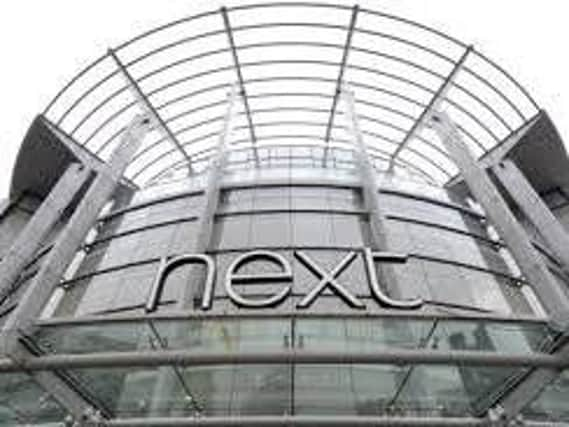Next sends chills through the retail sector


Next warned that profits could fall by as much as 14 per cent in a worst case scenario for the year to January 2018 and warned about cost pressures from the Brexit-hit pound, which the group has already said will probably see it hike prices by up to 5 per cent.
Chief executive Lord Wolfson, a prominent Leave campaigner, said that while the Government is right not to be rushed into a Brexit plan, fears over the negotiations would heap further pressure on an embattled retail sector.
Advertisement
Hide AdAdvertisement
Hide Ad“It will take time for them and we have to be patient, but there will be uncertainty in the meantime,” he said.
“I said 2016 would feel like we were walking up the down escalator. Well, the escalator has just got faster.”
Richard Lim, chief executive of consultancy Retail Economics, said: “These latest figures from Next confirm that underlying conditions on the high street remain desperate for clothing and footwear retailers.”
Shares in other fashion retailers took a hit on the news with Marks & Spencer closing down 6 per cent, Debenhams falling 6 per cent and Primark owner Associated British Foods closing down 3.7 per cent.
Advertisement
Hide AdAdvertisement
Hide AdNext said it is bracing itself for tougher times in 2017 as it warned over sales and profits after a worse-than-expected festive performance.
The fashion and homewares giant said sales in the 54 days to December 24 fell 0.4 per cent, defying hopes of a fourth quarter turnaround, while it posted a 7 per cent fall in end-of-season clearance sales.
Next said profits for the year to January 2017 are expected to fall by around 3.6 per cent and sales and profits would remain under pressure in a “challenging” year ahead.
The firm said that cost pressures, together with a shift from spending on clothing and footwear, could see total full-price sales fall by between 1.5 per cent and 4.5 per cent.
Advertisement
Hide AdAdvertisement
Hide AdOn the plus side, the group hopes to see a boost of around 1 per cent from overseas revenues due to the weak pound.
Next took aim at the Government over its handling of the UK’s exit from the EU.
It said there was “little visibility of the approach the UK Government will be taking to Brexit”.
Mr Lim warned that retailers may find it hard to raise prices.
Advertisement
Hide AdAdvertisement
Hide Ad“The outlook for consumer spending remains tough,” he said.
“The labour market is already showing tentative signs of weakening and as inflation accelerates real incomes will come under increasing pressure. “Given the weaker consumer backdrop it will be a difficult time for UK retailers to be raising prices.”
George Salmon, equity analyst at Hargreaves Lansdown, said Next’s results have set the tone for what is likely to be a difficult reporting season for retailers.
“Next’s group sales are down even against a weak Christmas period last year,” he said.
Advertisement
Hide AdAdvertisement
Hide Ad“The spluttering Directory division, previously the engine of growth, needs a major rethink and the group is struggling on the high street.
“But to be fair to Next, not all of the challenges are of their own making. Sterling falling off a cliff after the Brexit vote is one headwind that is hardly in the group’s control.
“The fact that Lord Wolfson is again forecasting a tough year does little to lighten the gloom.”
Next had been hoping for a fourth quarter rise in sales after a difficult 2016.
Advertisement
Hide AdAdvertisement
Hide AdBut it said the end-of-year blow meant profits are expected to come in at £792m for the 12 months to January 2017, depending on January trade, which would be a 3.6 per cent decline on last year.